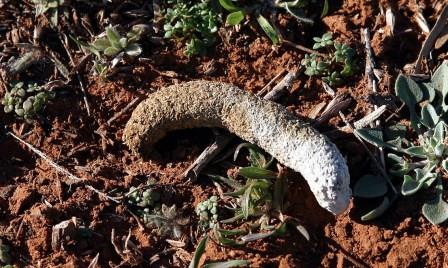Feb 26, 2018
SCOUTING FOR TURKEYS
It’s always exciting to see turkeys. Even during deer season we get charged up to see them silently slinking through the woods. But unlike deer, turkeys can’t really be patterned for long periods of time. Any sign you might find right now probably won’t play into your strategy on opening day. Plus, when they’re existing in flocks, turkeys typically travel more on a day-to-day basis. Come spring, gobblers will centralize their efforts to lure and maintain a flock of hens.
Turkeys are birds, mind you, and peculiar ones at that, so save your efforts for the week before the season starts to locate the general vicinity of where they’re feeding, roosting and most importantly, strutting. This will save a lot of time, effort and you’ll reduce the risk of running them out of the area.
Here’s what to look for:
Scratching
One of the best indications of turkeys presence is scratch marks - where they’re slowly moving along, using their feet to uncover bugs, grubs and other insects from the dead fall. Again, turkeys aren’t migrating from farm to farm in the spring like they do in fall and winter, but rather homesteading in preparation of breeding season. So wherever you find their feeding areas is usually going to be fairly close to their new quarters.
Strut Zones
This is the place you go to kill turkeys, right? Well, sometimes. Dominant gobblers are going to establish these areas early. When he’s setting up shop in what’s to become his breeding grounds, a tom will spend a lot of time gobbling, spitting, drumming and strutting.
Find these areas as close to opening day as possible by glassing large fields from vantage points. Food sources are great places to look as hens that aren’t ready to breed will mostly be looking for something to eat. In dusty areas, drag marks in the dirt made by a strutting tom’s wings can also indicate a strut zone.
Dust Bowls
Ever seen a turkey just drop down on the ground and shower itself in dust? They do this for preening and plumage purposes to keep their feathers in top condition. Feathers can become greasy or matted, kind of like human hair, and dust helps to dry them out.
Turkeys will typically return to the same dusting areas, though not necessarily everyday. Looks for pockmarks in the dust the size of a basketball. While we wouldn’t blatantly direct you to “sit over these dust bowls,” it is a sure-fire sign that turkeys are probably close by.
Roosts
There are a few ways to find where birds are roosting., but we’ve listed it close to the bottom, because unless your land holds an astronomical amount of birds, or you live in an area, say the Midwest, where they must concentrate in the few trees available, you’re not likely going to pinpoint the exact spot where turkeys go to bed each night. Most of the time, there’s not just one. That said, let’s loosely say we’re just trying to find the general vicinity.
Locating turkeys in the late afternoon, also known as “roosting a bird,” is a great way to learn where they’re planning to roost that night. This doesn’t mean you need to lay eyes on them. Listening for fly-up cackles works just fine. Early morning hoot owl calls are efficient, but whatever you do, resist the urge to move in closer. Give turkeys their space until it’s show time.
J-Shaped Droppings

Droppings are a good indication of what's in the area when scouting for turkeys.
Gobblers and jakes have at least taken a stroll (and something else) in the area when you find j-shaped droppings. Check for freshness to get an idea of when it happened. In worst case scenarios, like when gobblers are call-shy, sitting in one of these and hoping for the best is not a terrible idea. At least you know a male turkey was recently there.
Hands Off
Trail cameras are pretty awesome. During the late summer, fall and winter we post them on well-used game trails along with a pile of corn (where legal) to get deer to stop and pose. A few tweaks to that process and you’re scouting for turkeys. When you find one of the areas above, especially feeding and strut zones, hang up a camera or two (the more angles the better) to see what’s happening when you’re not there. More importantly, to find out when the turkeys are using that spot.
Change is Good
Don’t hunt the same spots from years past despite the luck you had there. Simply put: go where they turkeys are. This is why scouting close to opening day is so important. Obviously the more parcels of land you have to hunt the better, but even if it’s a small piece of ground, don’t just sit in a spot because of that one time...
Turkeys are weary and wily. And they tend to be catalysts for gray hairs on a tired man’s head. But, if you put some effort in before the season, the chances of having a big gobbler meet you halfway will go up drastically. And when that time comes, just make sure you have a shell in the chamber.
